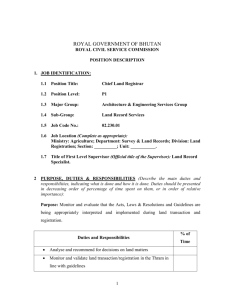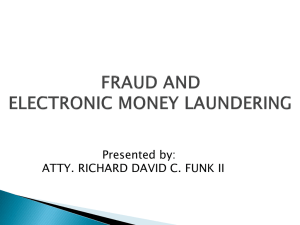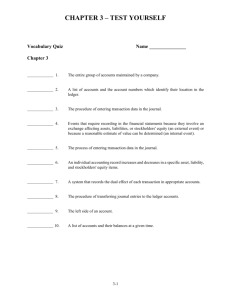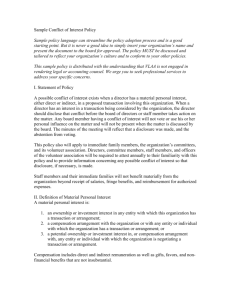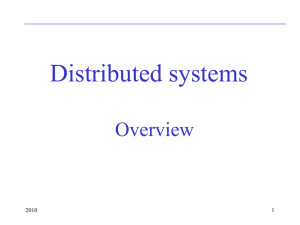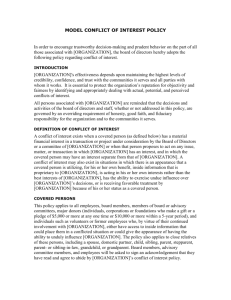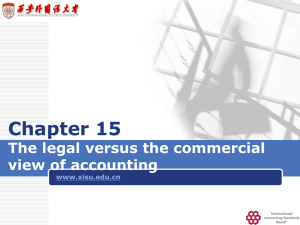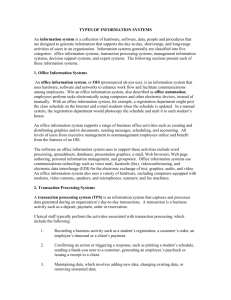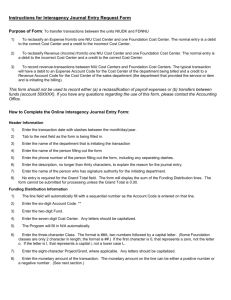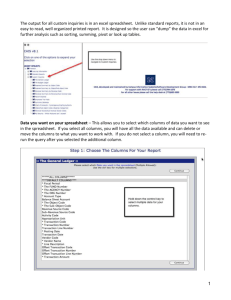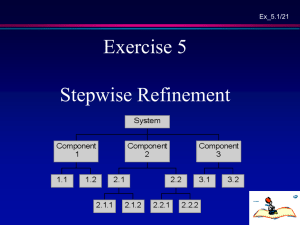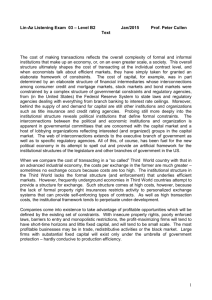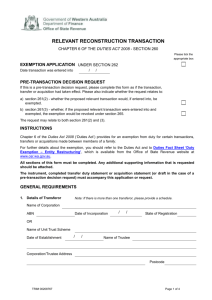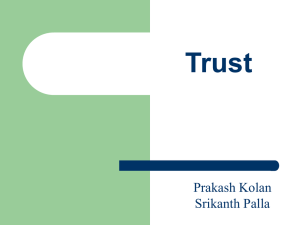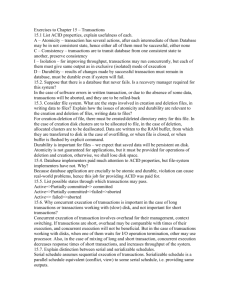Analysing the Relationship between Risk and Trust
advertisement
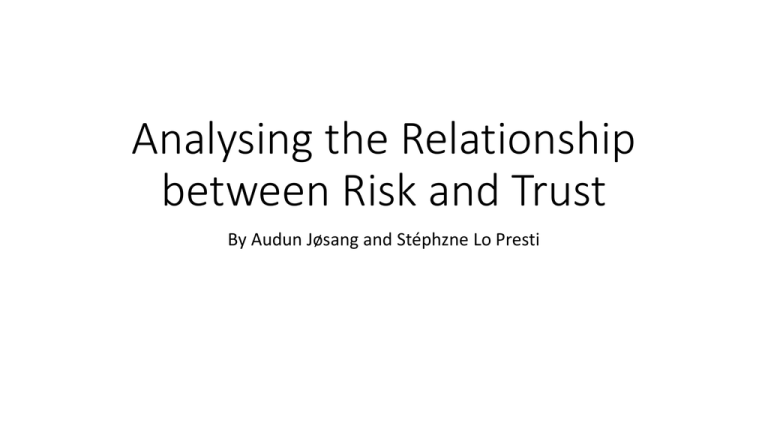
Analysing the Relationship between Risk and Trust By Audun Jøsang and Stéphzne Lo Presti Roadmap • Risk-Trust in Literature • Measuring Risk-Trust • Decision via Risk • Balancing Trust and Risk • Conclusion Risk-Trust in Literature • Concept uncertainty of Trust subjectivity risk • Trust is the extent to which one party is willing to depend on somebody, or something, in a given situation with a feeling of relative security, even though negative consequences are possible. • Concept of Risk • Anticipated hazard, measurable • Trust vs. Risk • Both difficult to scale • Both upon uncertainty and unpredictability • Relationship between them (antecedent, alternative, outcome)? Risk-Trust in Literature • A risk-trust model by fuzzy logic [Manchala1998] • (trans_history, cost) -> trust Measuring Risk-Trust : Decision via Risk • Expected Monetary Value (EV) • 𝐸𝑉 = 𝐼 𝑛 𝑖=1 𝑝𝑖 𝐺𝑖 • Expected Utility (EU) • 𝐸𝑈 = • 𝐼: the monetary investment/bet • 𝑝𝑖 : the probability of the 𝑖th outcome • 𝐺𝑖 : the gain factor of the 𝑖𝑡ℎ outcome, given 𝐼 𝑛 𝑖=1 𝑝𝑖 𝑢 𝐼𝐺𝑖 • 𝑢(⋅): non-linear utility function of monetary value • 𝑢 𝐼𝐺 < 𝐼𝐺: risk averse • 𝑢 𝐼𝐺 > 𝐼𝐺: risk seeking • 𝑢 𝐼𝐺 = 𝐼𝐺: risk-neutral • Risk-Neutral Case (𝐸𝑉 = 𝐸𝑈 = 𝐸𝐺 ⋅ 𝐼) 𝐸𝐺: Expected Gain Measuring Risk-Trust : Decision via Risk • 𝐸𝐺 For Decision • 𝐸𝐺 = 𝑝𝐺𝑠 + 1 − 𝑝 𝐺𝑓 = 𝑝 𝐺𝑠 − 𝐺𝑓 + 𝐺𝑓 • 𝑝: probability of successful transaction • 𝐺𝑠 : gain factor to a successful transaction 𝐺𝑠 ∈ [0, ∞] • 𝐺𝑓 : loss factor to a failed transaction 𝐺𝑓 ∈ [−1,0] • 𝐸𝐺 ≔ 𝑓(𝑝, 𝐺𝑠 , 𝐺𝑓 ) Measuring Risk-Trust : Decision via Risk • 𝐼 For Decision • 𝐼 = 𝐹𝐶 𝐶 • 𝐶: the total capital • 𝐹𝐶 : fraction of the total capital • 𝐹𝐶 ≔ 𝑓(𝑝, 𝐺𝑠 ) • 𝐹𝐶 varies in the same direction of 𝐺𝑠 and 𝑝 𝜆 𝐺𝑠 • E.g. 𝐹𝐶 = 𝑝 • 𝜆: factor moderating the influence of 𝐺𝑠 , or risk attitude • Low 𝜆 – risk-taking; high 𝜆 – risk-aversion; Measuring Risk-Trust : Balancing Trust - Risk • “The outcome of the transaction depends on somebody or something and that the relying party is uncertain about the outcome of the transaction.” • Paraphrase 𝒑: the reliability of 𝑥 for producing a successful outcome • Reliability Trust: the trusting party’s probability estimate 𝑝 of success of the transaction Measuring Risk-Trust : Balancing Trust - Risk • Decision Trust • to normalize different between 𝑥’s reliability and the cut-off probability on an agent’s decision surface (risk attitude), given (1) risk attitude defined by a decision surface, and (2) transaction outcome upon 𝑝, 𝐺𝑠 , 𝐹𝐶 and 𝑝𝐷 • 𝑇= 𝑝−𝑝𝐷 𝑝𝐷 0 𝑝−𝑝𝐷 1−𝑝𝐷 𝑝 < 𝑝𝐷 𝑝 = 𝑝𝐷 𝑝 > 𝑝𝐷 𝑇 ∈ [−1,1] • 𝐷: decision surface • 𝑝: probability 𝑥 producing a successful outcome, given 𝐺𝑠 and 𝐹𝐶 • 𝑝𝐷 : cut-off probability on 𝐷 for the same 𝐺𝑠 and 𝐹𝐶 Measuring Risk-Trust : Balancing Trust - Risk • Decision Trust • • • • • (0,-1), (𝑝𝐷 ,0), and (1,1) Decision trust depended on a distance between 𝑝 and 𝑝𝐷 𝑇 > 0, trusting 𝑥 for the transaction 𝑇 = 0, undecided 𝑇 < 0, not trusting 𝑥 Conclusion Summary Shortcomings: • To derive a computational model for risk-trust • Reliability trust: probability of success of the transaction • Decision trust: considering risk attitude, complete the notion of trust • Success of an operation is more complex than reliability of 𝑥 • Behavior modelling Thank You






